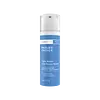What's inside
What's inside
 Key Ingredients
Key Ingredients

 Benefits
Benefits

 Concerns
Concerns

 Ingredients Side-by-side
Ingredients Side-by-side

Water
Skin ConditioningIsopropyl Myristate
EmollientCaprylic/Capric Triglyceride
MaskingGlycerin
HumectantNiacinamide
SmoothingHydroxystearic Acid
CleansingOryza Sativa Bran Oil
EmollientTocotrienols
Skin ConditioningRetinyl Propionate
Skin ConditioningHexylresorcinol
AntimicrobialAcrylates/C10-30 Alkyl Acrylate Crosspolymer
Emulsion StabilisingCetyl Alcohol
EmollientCastanea Sativa Leaf Extract
Skin ConditioningHydroxyacetophenone
AntioxidantCeramide AP
Skin Conditioning1,2-Hexanediol
Skin ConditioningCaprylyl Glycol
EmollientSodium Hydroxide
BufferingDilauryl Thiodipropionate
AntioxidantPentaerythrityl Tetra-Di-T-Butyl Hydroxyhydrocinnamate
AntioxidantSodium Phytate
BHT
AntioxidantWater, Isopropyl Myristate, Caprylic/Capric Triglyceride, Glycerin, Niacinamide, Hydroxystearic Acid, Oryza Sativa Bran Oil, Tocotrienols, Retinyl Propionate, Hexylresorcinol, Acrylates/C10-30 Alkyl Acrylate Crosspolymer, Cetyl Alcohol, Castanea Sativa Leaf Extract, Hydroxyacetophenone, Ceramide AP, 1,2-Hexanediol, Caprylyl Glycol, Sodium Hydroxide, Dilauryl Thiodipropionate, Pentaerythrityl Tetra-Di-T-Butyl Hydroxyhydrocinnamate, Sodium Phytate, BHT
Water
Skin ConditioningNiacinamide
SmoothingNeopentyl Glycol Diheptanoate
EmollientGlycerin
HumectantVitis Vinifera Seed Oil
EmollientCapryloyl Glycerin/Sebacic Acid Copolymer
Skin Conditioning1,2-Hexanediol
Skin ConditioningPolyglycerin-3
HumectantPolyglyceryl-3 Lactate/Laurate
CleansingDiheptyl Succinate
EmollientTocopheryl Acetate
AntioxidantRetinol
Skin ConditioningSodium Stearoyl Glutamate
CleansingPolyglyceryl-2 Oleate
EmulsifyingPolyhydroxystearic Acid
EmulsifyingHydroxyacetophenone
AntioxidantPolyacrylate Crosspolymer-6
Emulsion StabilisingPolyglyceryl-2 Stearate
EmulsifyingSclerotium Gum
Emulsion StabilisingPolysorbate 20
EmulsifyingTocopherol
AntioxidantCitric Acid
BufferingWater, Niacinamide, Neopentyl Glycol Diheptanoate, Glycerin, Vitis Vinifera Seed Oil, Capryloyl Glycerin/Sebacic Acid Copolymer, 1,2-Hexanediol, Polyglycerin-3, Polyglyceryl-3 Lactate/Laurate, Diheptyl Succinate, Tocopheryl Acetate, Retinol, Sodium Stearoyl Glutamate, Polyglyceryl-2 Oleate, Polyhydroxystearic Acid, Hydroxyacetophenone, Polyacrylate Crosspolymer-6, Polyglyceryl-2 Stearate, Sclerotium Gum, Polysorbate 20, Tocopherol, Citric Acid
 Reviews
Reviews

Alternatives
Ingredients Explained
These ingredients are found in both products.
Ingredients higher up in an ingredient list are typically present in a larger amount.
1,2-Hexanediol is a synthetic liquid and another multi-functional powerhouse.
It is a:
- Humectant, drawing moisture into the skin
- Emollient, helping to soften skin
- Solvent, dispersing and stabilizing formulas
- Preservative booster, enhancing the antimicrobial activity of other preservatives
Glycerin is already naturally found in your skin. It helps moisturize and protect your skin.
A study from 2016 found glycerin to be more effective as a humectant than AHAs and hyaluronic acid.
As a humectant, it helps the skin stay hydrated by pulling moisture to your skin. The low molecular weight of glycerin allows it to pull moisture into the deeper layers of your skin.
Hydrated skin improves your skin barrier; Your skin barrier helps protect against irritants and bacteria.
Glycerin has also been found to have antimicrobial and antiviral properties. Due to these properties, glycerin is often used in wound and burn treatments.
In cosmetics, glycerin is usually derived from plants such as soybean or palm. However, it can also be sourced from animals, such as tallow or animal fat.
This ingredient is organic, colorless, odorless, and non-toxic.
Glycerin is the name for this ingredient in American English. British English uses Glycerol/Glycerine.
Learn more about GlycerinHydroxyacetophenone is antioxidant with skin conditioning and soothing properties. It also boosts the efficiency of preservatives.
This ingredient is not irritating or sensitizing.
Niacinamide is a multitasking form of vitamin B3 that strengthens the skin barrier, reduces pores and dark spots, regulates oil, and improves signs of aging.
And the best part? It's gentle and well-tolerated by most skin types, including sensitive and reactive skin.
You might have heard of "niacin flush", or the reddening of skin that causes itchiness. Niacinamide has not been found to cause this.
In very rare cases, some individuals may not be able to tolerate niacinamide at all or experience an allergic reaction to it.
If you are experiencing flaking, irritation, and dryness with this ingredient, be sure to double check all your products as this ingredient can be found in all categories of skincare.
When incorporating niacinamide into your routine, look out for concentration amounts. Typically, 5% niacinamide provides benefits such as fading dark spots. However, if you have sensitive skin, it is better to begin with a smaller concentration.
When you apply niacinamide to your skin, your body converts it into nicotinamide adenine dinucleotide (NAD). NAD is an essential coenzyme that is already found in your cells as "fuel" and powers countless biological processes.
In your skin, NAD helps repair cell damage, produce new healthy cells, support collagen production, strengthen the skin barrier, and fight environmental stressors (like UV and pollution).
Our natural NAD levels start to decline with age, leading to slower skin repair, visible aging, and a weaker skin barrier. By providing your skin niacinamide, you're recharging your skin's NAD levels. This leads to stronger, healthier, and younger looking skin.
Another name for vitamin B3 is nicotinamide. This vitamin is water-soluble and our bodies don't store it. We obtain Vitamin B3 from either food or skincare. Meat, fish, wheat, yeast, and leafy greens contain vitamin B3.
The type of niacinamide used in skincare is synthetically created.
Learn more about NiacinamideWater. It's the most common cosmetic ingredient of all. You'll usually see it at the top of ingredient lists, meaning that it makes up the largest part of the product.
So why is it so popular? Water most often acts as a solvent - this means that it helps dissolve other ingredients into the formulation.
You'll also recognize water as that liquid we all need to stay alive. If you see this, drink a glass of water. Stay hydrated!
Learn more about Water